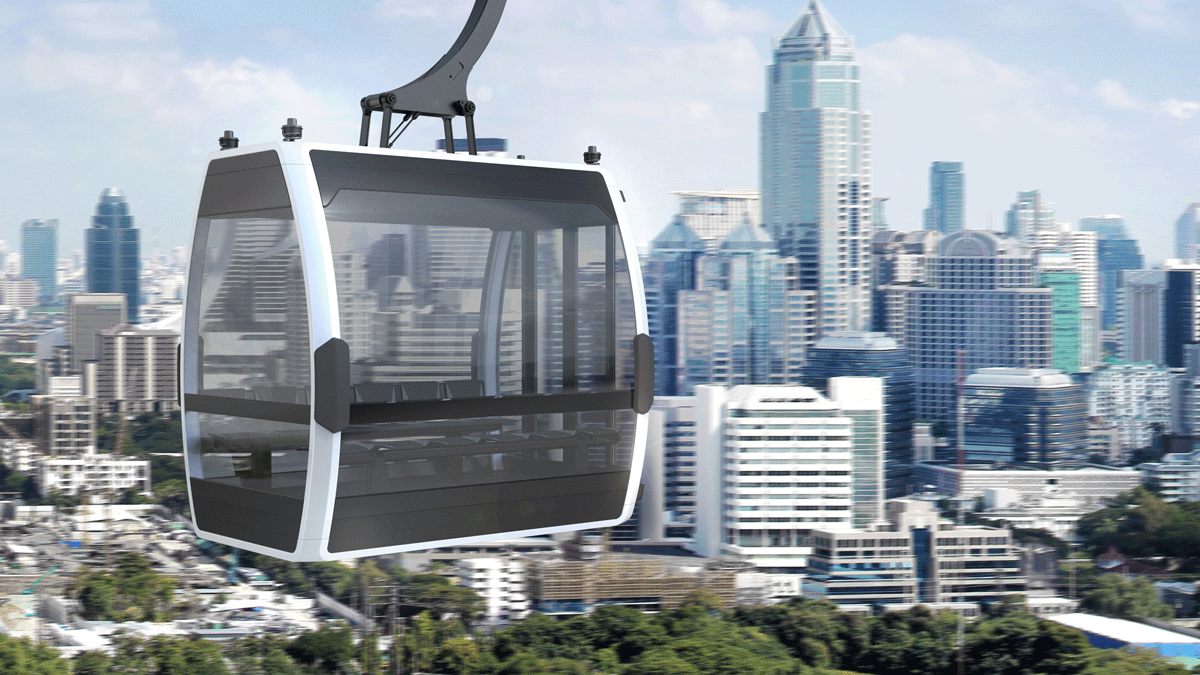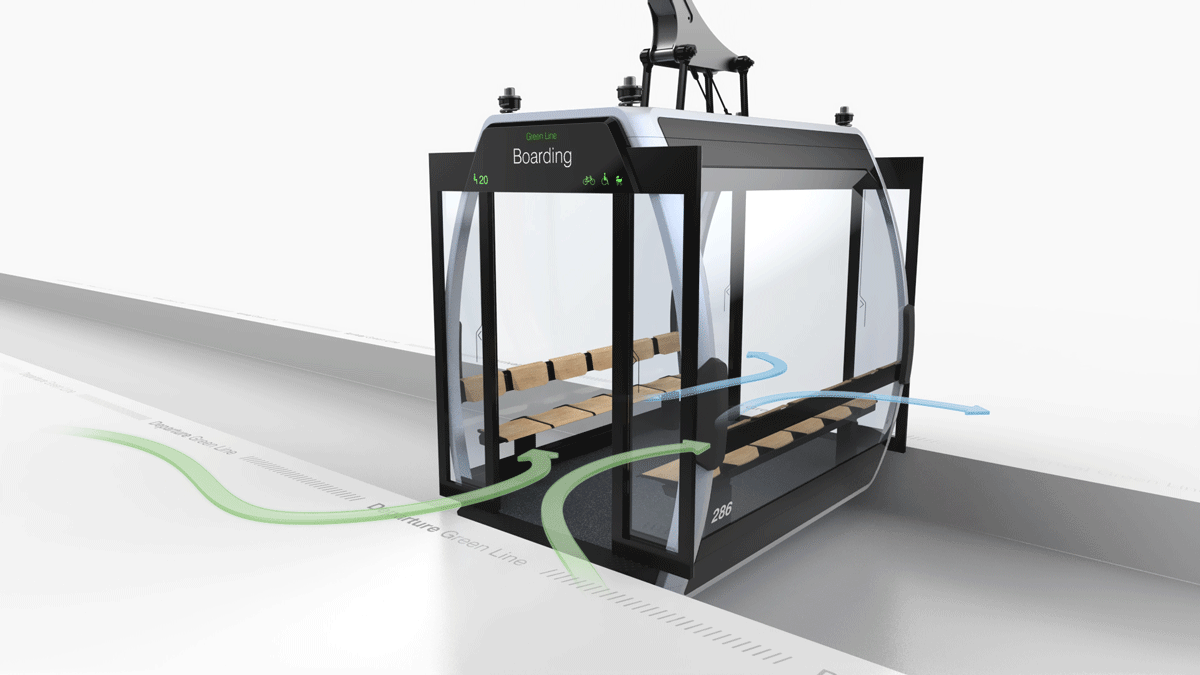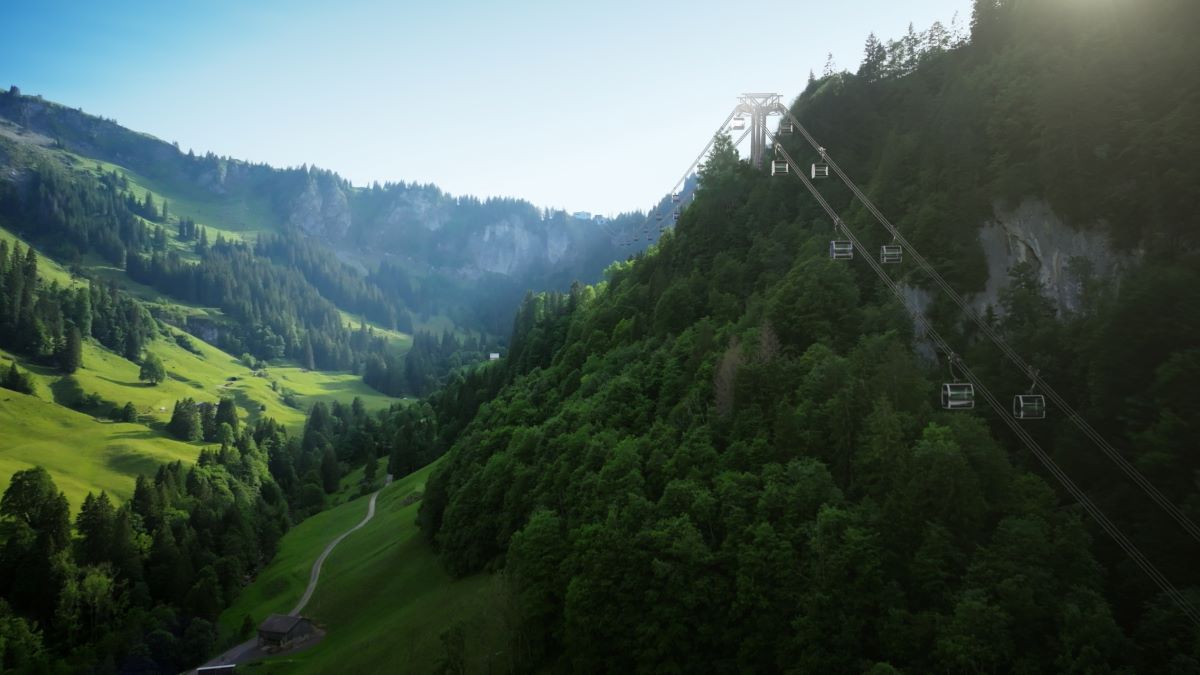
Cities, SI Urban 2/2022
TRI-LINE: New Solution for Urban Transport
Around 55 percent of the global population currently lives in cities, and the trend is upward. The expansion of urban space into areas that are not easily accessible increasingly requires more complex transport infrastructure, to meet the growing mobility demands.
Although one part of the solution –the use of an additional spatial dimension by ropeways – is already available now, it is still too frequently overlooked in the planning.
As an integrated element of multimodal urban mobility of the future, however, ropeway systems offer numerous optimisation opportunities for more attractive local public transport mobility concepts.
Emission-free operation on location, fast and cost-effective construction and high transport capacity are just a few of the benefits with which the ropeway can score points.
Both in the mountains and in the city, the TRI-Line displays its full potential for sustainable mobility of the future.
The best of both worlds
Compact ropeway components, comfortable gondolas with boarding and alighting on both sides for up to 20 people, and a transport capacity of up to 8,000 people per hour and direction: these are just a few of the impressive highlights of the new TRI-Line.
It can be used in all application areas – in the city or in the mountains, in winter or summer – and is the benchmark for sustainable, cable-drawn mobility. Its compact design – combined with the ability to overcome long cable spans – moreover ensures a minimal footprint on the ground.
The gondolas are fitted with doors on both sides.

“The TRI-Line is a connectable circulating system, a consistent development and fusion of the strengths of two tried and tested ropeway systems. It combines the advantages of the D-Line with the benefits of the high-performance 3S ropeway,” explains Peter Luger, TRI-Line Development Manager at DOPPELMAYR in Wolfurt.
In comparison with considerably larger 3S ropeways, the stations and supports take up considerably less space and have a significantly shorter construction time, comparable to that of single-cable circulating tracks.
This improves flexibility in densely populated areas. Furthermore, the TRI-Line has the high wind stability of a 3S ropeway.
Advantages of the TRI-LINE
- Efficient: Transport capacity of up to 8,000 people per hour and direction.
- Compact: Compact stations and ropeway components reduce the space needed.
- Barrier-free: There is level boarding and alighting of the spacious gondolas with electric doors on both sides.
- Digitalised: The TRI-Line is an interconnected ropeway system, all gondola functions can be integrated and controlled directly.
- Pioneering: The AURO concept facilitates autonomous ropeway operation and this reduces the operating costs.
- High wind stability: Two supporting cables, one traction cable and intermediate mountings ensure a high level of stability.
Comfortable and efficient
In form and function, the TRI-Line gondolas blend perfectly into the design line of the popular OMEGA V and ATRIA gondolas. The modular seating concept is designed for all application areas.
It offers sufficient space and comfort for up to 20 passengers, including twelve people sitting in individual seats. Modern safety, communication and entertainment technology, such as automatic surveillance during boarding and alighting, intercom systems and Wi-Fi, serve the demands of modern mobility.
The gondolas are completely barrier-free, with level boarding and alighting and electric doors on both sides.
Passenger flows in the station area can therefore be controlled on special noise protection measures, such as the smooth, quiet vehicle transport on the two enclosed supporting cables, ensure particularly quiet operation and take into account the requirements of a densely populated area.
Innovation makes it possible
The key component in the development of the TRI-Line is the drive. This is based on use of the D-Line detachable clip: “Based on this, we were able to create a simple, easily maintainable drive. This enabled us – on the basis of the compact D-Line stations and their components – to design a system that is above all cost saving, generally low-maintenance and safe. From a technical perspective, the drive is the absolute highlight,” Luger emphasises.
Hoch-Ybrig
The first TRI-Line will be constructed in Switzerland.

First TRI-Line in Switzerland
The world’s first TRI-Line is under construction in Hoch-Ybrig, Switzerland. This will replace the 55-year-old aerial tramway. In both winter and summer, the resort of Hoch-Ybrig attracts visitors from Zurich and the surrounding area for skiing or hiking.
“With the TRI-Line we have found a ropeway system that meets all our requirements – and at a reasonable price. The TRI-Line is compact and – thanks to the 3S advantages – able to cope with the prevailing wind in our area, which is a key criterion for the important feeder line,” explains Urs Keller, CEO in Hoch-Ybrig.







